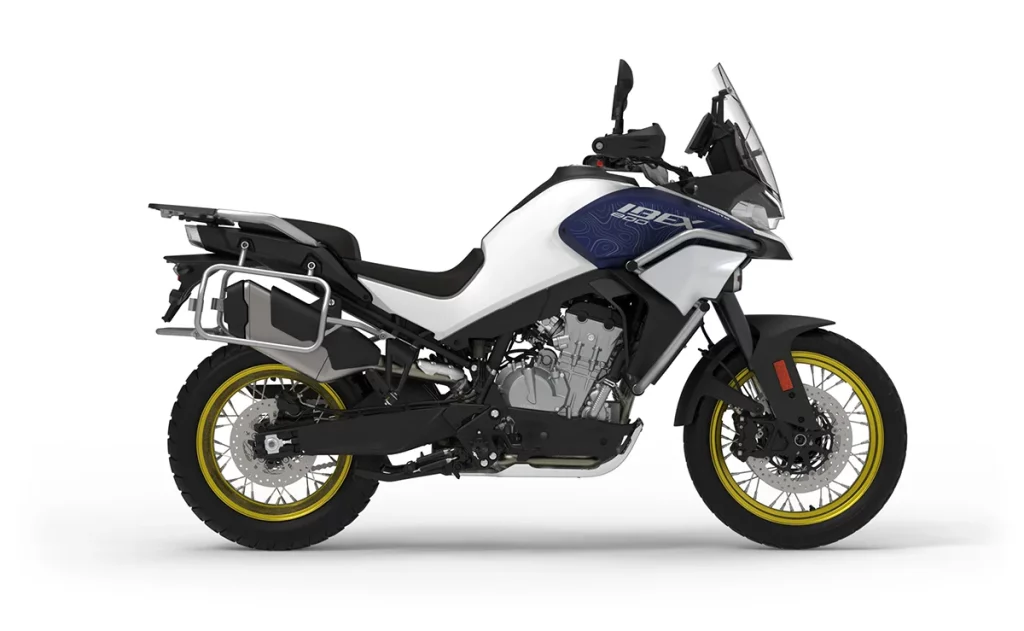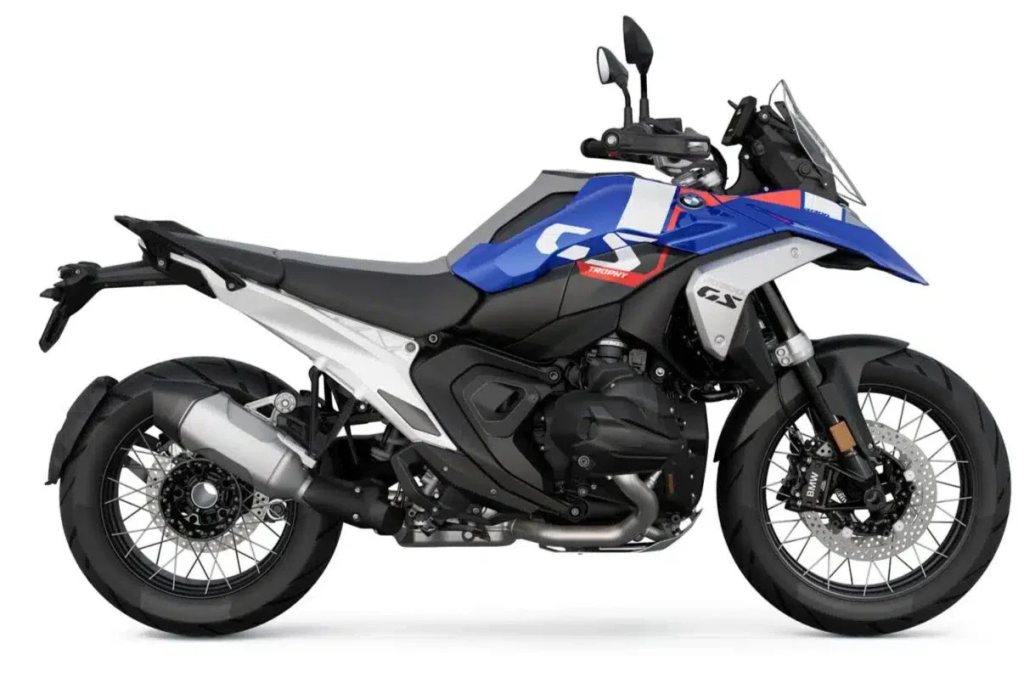PERU MACHU PICCHU ADVENTURE
This motorcycle adventure in southern Peru is an epic loop through incredible mountains and along the rugged Pacific coast. We believe it to be some of the best-paved riding in the world. This 12-day ride was designed to have both long and short days and to acclimate riders to the high altitude we hit on occasion during the ride. Along the way, visit the mysterious lines of Nazca. Take a tour to Machu Picchu (included in the tour price), and marvel at one of the seven wonders of the world. Ride through the Andes to heights of 15,600 ft, and experience the unbelievable Pan American Highway along the remote Pacific Coast. From the Nazca lines to Machu Picchu to strolling the streets of Cuzco, this motorcycle ride will be unforgettable.
* Even though this is an all-paved itinerary, there will be portions of the ride that will be dirt surface. Latin America hands it to you sometimes.
April 25 - May 8, 2026
April 24 - May 7, 2027
Available Motorcycles






THE ITINERARY
DAY 1 - Arrive in Arequipa
Your motorcycle adventure starts with your arrival in Arequipa, Peru. This bustling city is Peru's second largest, and features a historic center which is a UNESCO World Heritage Site. Enjoy a welcome dinner in the evening. Stay in Arequipa

DAY 2 - Arequipa to Camana (132 miles/213 km)
Bike pick-up and ride out to the coast. There is a chance to ride into the Majes Valley, home to the river that runs through one of the deepest canyons in the world - Colca Canyon. Ride to the oceanside farming community of Camana. Stay in Camana.

DAY 3 - Camana to Chala (138 miles/223 km)
Get ready for one of the best rides of your life as you climb out of Colca Canyon and skirt the Pacific Ocean coastline on the Panamerican Highway. Traffic is sparse, and the epic coastline views are unforgettable. Stay in Chala.

DAY 4 - Chala to Nazca (105 miles/170 km)
Continue along the Pacific Coast to Nazca, home to one of the most mysterious archeological sites in the world: The Nazca Lines. Hundreds of mysterious lines are etched in the surface of the desert for miles. A flight-see over the lines is an option for today. Stay in Nazca.

DAY 5 - Nazca to Chalhuanca (212 miles/342 km)
Jump on your motorcycle and climb into the Andes on incredibly twisty roads, ascending and descending over 20,000 feet before lunch. Witness superb mountain views, fantastic paved curves and indigenous herding communities. Stay in Chalhuanca.

DAY 6 - Chalhuanca to Ollantaytambo (194 miles/313 km)
Today the motorcycle adventure leads you to the Sacred Valley of the Incas and a town rich in Incan history: Ollantaytambo. Much of the town is a showcase of Incan architecture. Truly, one of the best riding days anywhere! Stay in Ollantaytambo.

DAY 7 - Visit to Machu Picchu
We'll ride the train from Ollantaytambo to Aguas Calientes, and explore the ruins of this ancient Incan city. Recently named one of the Seven Wonders of the World and designated a UNESCO World Heritage site, Machu Picchu will deliver. Stay in Ollantaytambo.

DAY 8 - Free Day, Ollantaytambo (up to 150 miles/240 km)
Ride with your guide into the Amazon Basin by way of a precarious road through an ever-changing variety of plants and animals. Or you can stay in Ollantaytambo, and explore a town locked in time surrounded by Inca ruins and rockwork! Stay in Ollantaytambo.

DAY 9 - Ollantaytambo to Cusco (43 miles/70 km)
We'll continue back through the Sacred Valley of the Incas on a short ride to the historic capital of the Incan empire, Cusco. Walk the streets and take in the central plaza. Stay in Cuzco.

Day 10 - Free Day in Cuzco
Explore Cusco with its up-and-down streets and beautiful stonework, and discover the juxtaposition of Incan architecture, both ancient and modern. Hire a local guide for the day to take you in and around Cuzco, visiting various archeological sites. Stay in Cuzco.

DAY 11 - Cuzco to Puno (240 miles/387 km)
Motorcycle all day through the Andes, ending at the shores of Lake Titicaca. Puno rests at the edge of the lake. You can take an optional boat tour of the mystical Reed Islands, and visit the families that live, floating on the lake. Stay in Puno.

DAY 12 - Puno to Chivay (185 miles/299 km)
Leave the shores of Lake Titicaca and top out at 16,000 feet before arriving in scenic Chivay. Chivay is located in Colca Canyon, the world's second deepest canyon. Stay in Chivay.

DAY 13- Chivay to Arequipa (165 miles/266 km)
Take a sojourn down Colca Canyon, looking for the famed Condor. Descend into Arequipa at the end of the day. There is also another road that we may try which might not be all paved... adding to the adventure! Stay in Chivay. Farewell dinner tonight!

Day 14 Departure..
Fly home or keep the dream alive. The next motorcycle adventure vacation awaits.
THE GEAR TO BRING
MotoQuest guides wear KLIM helmets, jackets, pants and gloves, and we outfit our motorcycles with luggage and accessories from Revzilla. You can view and download our complete MotoQuest packing list here.
ROAD CONDITIONS:
This motorcycle adventure is paved with extraordinary sections with curves and altitude change. Pavement is in good condition with some rough sections and some gravel sections due to road construction.
Total Miles: 1,885
Difficulty: Is this tour right for me?
Contact us with any questions
Included with the tour:
Hotel Accommodations
Premiere Welcome and Farewell Dinners
Professional MotoQuest Guide(s)
Support Vehicle
Support Vehicle Driver
Staff Trained in First Aid with Satellite Phone
Machu Picchu Train, Bus, Entrance Tickets and Guide
MotoQuest Swag Bag
Photos Taken on the Trip
Automatic Enrollment in Global Rescue
Not Included:
Airfare
Meals on the Road
Gas
Alcohol
Alternative Tours
Travel Insurance
Gratuities
National Park Entrance Fees
MotoQuest Staff on Tour:
Landmarks And Attractions
Arequipa, Peru is a captivating city nestled in the Andes Mountains and known for its rich history, stunning architecture, and vibrant culture. Arequipa is often referred to as the “White City” due to the extensive use of white volcanic stone in its colonial buildings.
One of the highlights of Arequipa is its historic city center, which is a designated UNESCO World Heritage site. The main square, Plaza de Armas, is a focal point of the city and is surrounded by beautiful colonial buildings, including the impressive Cathedral of Arequipa. The cathedral is a must-visit, with its intricate architecture and ornate interior.
Another iconic attraction in Arequipa is the Monastery of Santa Catalina. This expansive complex is like a city within a city, with its colorful buildings, narrow streets, and peaceful courtyards. It offers a fascinating glimpse into the lives of the nuns who once resided there.
Arequipa is also blessed with natural beauty. The city is framed by three towering volcanoes: Misti, Chachani, and Pichu Pichu. These majestic peaks provide a stunning backdrop and offer opportunities for outdoor adventures such as hiking and trekking.
The local cuisine in Arequipa is renowned for its flavors and variety. One must-try dish is “rocoto relleno,” a spicy stuffed pepper dish that showcases the region’s culinary prowess. Arequipa is also famous for its delicious ice cream, known as “queso helado,” which is made with unique ingredients like cinnamon and coconut.
The people of Arequipa are known for their warmth and hospitality, making visitors feel welcome and at home. The city hosts various festivals and cultural events throughout the year, showcasing traditional dances, music, and costumes.
The Nazca Lines is a mysterious and captivating archaeological wonder located in the Nazca Desert of southern Peru. These ancient geoglyphs are enormous designs etched into the desert floor, covering an area of about 450 square kilometers. The Nazca Lines consist of various shapes and figures, including animals, plants, and geometric patterns. These designs were created by removing the reddish-brown iron oxide-coated pebbles on the surface, revealing the lighter-colored earth beneath. The lines have remained remarkably well-preserved over centuries due to the arid climate of the region.
The purpose and meaning behind the Nazca Lines continue to intrigue researchers and archaeologists. Some theories suggest that they were created for astronomical or religious purposes, while others propose that they served as pathways for ceremonial processions. The sheer scale and precision of these geoglyphs have sparked numerous debates and speculations about their origins and significance.
One of the most famous figures among the Nazca Lines is the “Hummingbird,” a large bird-shaped design with outstretched wings. Other notable figures include a spider, a monkey, a condor, and a tree. These intricate and massive designs can only be fully appreciated from the air, which has led to the development of scenic flights for visitors to witness the Nazca Lines from above.
The Nazca Lines continue to be a source of wonder and fascination, drawing visitors from around the world who are eager to witness these enigmatic creations. While the exact purpose of the lines may remain a mystery, their sheer scale and artistic precision make them a truly remarkable archaeological site.
Machu Picchu is a magnificent ancient citadel nestled high in the Andes Mountains of Peru. This UNESCO World Heritage site is often referred to as the “Lost City of the Incas” and is one of the most iconic and breathtaking archaeological sites in the world. Machu Picchu was built by the Inca civilization around the 15th century and remained hidden from the outside world until its rediscovery in 1911 by the American explorer Hiram Bingham.
The site is perched on a mountain ridge, surrounded by lush green valleys and towering peaks, creating a truly awe-inspiring setting. The architecture of Machu Picchu is a testament to the ingenuity and skill of the Inca people. The site is comprised of stone structures, terraces, and plazas that blend harmoniously with the natural landscape.
The precision of the stonework, without the use of mortar, is truly remarkable. One of the most iconic features of Machu Picchu is the Intihuatana Stone, a carved rock that served as a solar clock and astronomical observatory for the Incas. The Temple of the Sun, the Temple of the Three Windows, and the Sacred Plaza are among the other notable structures within the citadel.
To reach Machu Picchu, visitors typically embark on the famous Inca Trail, a multi-day trek that winds through stunning mountain scenery and ancient Inca ruins. Alternatively, there are also train and bus options available for those who prefer a less strenuous journey.
Machu Picchu holds great cultural and spiritual significance, and its remote location adds to its mystique. It is a place where one can marvel at the architectural brilliance of the Inca civilization and feel a deep connection to the past.
Ollantaytambo is a captivating town located in the Sacred Valley of Peru. Ollantaytambo is known for its well-preserved Inca ruins and its rich historical significance. The town of Ollantaytambo was once an important administrative and ceremonial center for the ancient Inca civilization. It is believed to have been built by Emperor Pachacuti in the 15th century and served as a stronghold during the Inca resistance against the Spanish conquistadors.
One of the main attractions in Ollantaytambo is the Ollantaytambo Archaeological Park, which houses the impressive ruins of the Inca fortress. The site features massive stone terraces, intricate stone carvings, and ceremonial temples. Climbing to the top of the ruins offers breathtaking views of the surrounding mountains and the town below.
Ollantaytambo is also known as the starting point for the famous Inca Trail, a multi-day trek that leads to the majestic Machu Picchu. Many visitors choose to spend a night in Ollantaytambo before embarking on their journey, immersing themselves in the charm of the town and its Inca heritage. The town itself is a delightful place to explore, with its narrow cobblestone streets, traditional adobe houses, and vibrant local markets.
The Plaza de Armas is the central square, where you can find quaint cafes, shops selling local handicrafts, and the imposing Temple Hill, another archaeological site worth visiting.
Ollantaytambo offers a unique glimpse into the ancient Inca civilization and its architectural marvels. It is a place where history comes alive, and visitors can appreciate the ingenuity and craftsmanship of the Inca people.
Los Uros of Lake Titicaca is a fascinating indigenous community that resides on the floating islands of Lake Titicaca, located on the border of Peru and Bolivia. The Los Uros people have a unique way of life that revolves around the reed islands they inhabit. The Los Uros are known for their exceptional craftsmanship in creating these floating islands. They construct the islands using totora reeds, a type of aquatic plant that grows abundantly in the lake. The reeds are layered on top of each other to form a sturdy base, and additional layers are added periodically to maintain the islands’ structure.
Living on these floating islands allows the Los Uros to adapt to the ever-changing water levels of Lake Titicaca. They use the reeds not only for building their homes but also for crafting boats, furniture, and handicrafts. The reeds also serve as a source of food and medicine for the community.
Visiting the Los Uros offers a unique opportunity to learn about their traditional way of life. You can explore the floating islands, interact with the locals, and gain insight into their customs and traditions. The Los Uros people are known for their warm hospitality and are often eager to share their culture with visitors.
While tourism has brought economic opportunities to the Los Uros community, it is important to approach their way of life with respect and cultural sensitivity. It is advisable to visit the islands with a local guide who can provide valuable insights and ensure a responsible and meaningful experience.

